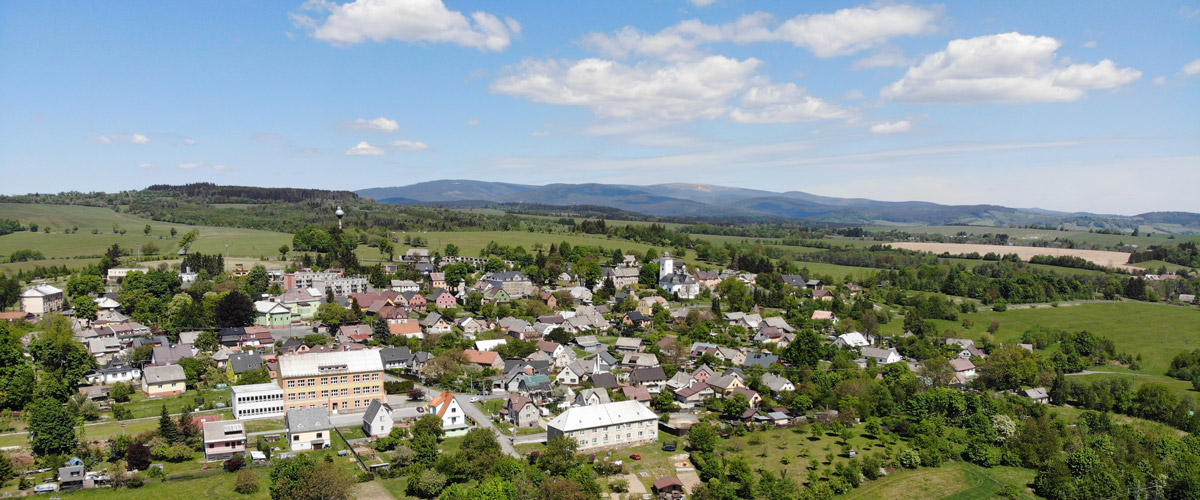Horní Město is the most high situated village in the Rýmařov region and the centre of former ore mining in the whole area. Many remarkable monuments can still be found here and the beautiful landscape in the surroundings is undoubtedly worth seeing.
Silver mines used to be located in the village. As early as 1398, the settlement of Hankštejn was located here. The town was founded as a free royal mining town in 1580 under Emperor Rudolf II. This is evidenced by an inscription engraved on the cemetery cross in Horní Město. The oldest evidence of mining in the town dates back to 1402. It was during the Eder period that mining flourished, so the Emperor granted certain advantages and a new mining order to the local lords. New deposits were discovered to the north of Skal – Hankštejn – that is the present-day Silver Mountains, then Najfung. Around 1542, 6 mining families settled above the Rocks, built their houses there, and these miners were granted a new mining order and these 6 houses were later promoted to a free imperial mining town called Bergstadt-Hangstein in 1580 under Rudolf II. In time, only the name Bergstadt – that is, Upper Town – remained. This marked the beginning of the Upper Town, which began to grow thanks to imperial privileges. The original village of Hankstein began to decline and people started to farm. The Upper Town took over the mining tradition. Mining was accompanied by alternating fortunes until the middle of the last century. The gold veins were already extracted and only non-ferrous metals remained. In 1955 there was renewed interest in resuming mining and prospecting was carried out until 1965, when the deposit went into production. However, it soon became apparent that mining was economically unviable and the last cart was mined on 30 September 1970.
The dominant structure of the village is the church of St. Mary Magdalene from 1611, the interior includes unique paintings by the painter Weintritt from 1690.
The village of Horní Město has 4 parts.
Skály
Skály, formerly Hankštejn, was an old mining settlement which is mentioned in documents as early as 1398. It is therefore older than Horní Město. The church, dedicated to St. Wenceslas, was built in 1812, is nicely vaulted and has a nice tower and facade. The painting was already painted for the first church by the well-known Baroque painter Jan Kryštof Handke (1749).
Stříbrné Hory
Stříbrné Hory, formerly Najfung, also an old mining settlement. The name of one hill, Silber-Berg, i.e. Silver Mountain, indicates that silver was mined here. The village was founded in 1542 at these mines. The chapel was built between 1769 and 1773. The chapel has a neo-Gothic high altar, carved from cherry wood and decorated with figures of the 12 apostles.
Rešov
The parish of Rešov already existed before 1350, the next written mention is in the list of villages of the Rabštejn manor from 1398. Rešov was an independent village with 180 inhabitants, it had a one-class kindergarten, a shop and a tavern. The landscape with the famous national natural monument “Rešov Waterfalls” is widely visited by tourists.
Dobřečov
Dobřečov lies on the highest hill of the landscape above Horní Město – Špičák 777 m above sea level. The inhabitants lived by mining iron ore, working in the forest and herding. Dobřečov had a two-class school, a shop, a post office and an inn. Nowadays it is more of a recreational area with beautiful views of the countryside.
Read more about the village here: www.hornimesto.cz

